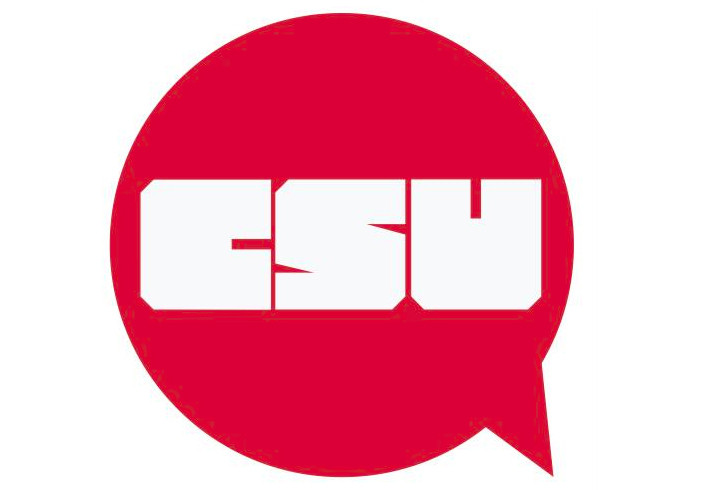ConU Administration Breakdown
At Concordia, acronyms can either become the bane of your existence or a way to impress (or lose) friends with some university knowhow. Long titles of the most prominent organizations are abbreviated to three or four letters. You have the CSU, ASFA, YUBS and ECA to name a few (one of those doesn’t exist by the way—ha, gotcha journalism!).
Here’s a guide to which associations/organizations that pertain to you, why they’re important and what to expect from them this year (and who to complain to if your needs aren’t met).
CONCORDIA STUDENT UNION (CSU)
Ah, the CSU—it’s the big one. Every undergraduate student at Concordia is represented by the CSU, and it’s not free. To fund the eight-person executive team, staff and various resources the student union employs, it takes $3.80 per credit. For full-time students, that can be a maximum $57 per semester.
This week’s worth of groceries does not go to waste, however. The CSU operates student advocacy, legal, and housing and job resources centres, as well as provide budgets for the many and diverse student-run clubs on campus. Also, you are automatically signed up to a health and dental plan (that you can opt out of if you’re fancy like that).
It’s the grand-scale projects you will eventually pay into that the CSU makes headlines for. The current executive, led by President Terry Wilkings, is largely running on the same mandate as last year’s. For the next year, the executive team—who are paid approximately $26,000 in honorarium and bonus for a year—will oversee the completion of a daycare, a coop student housing building, a greenhouse on the Loyola campus and the reopening of our on-campus bar, Reggie’s.
The timeline for these projects are mixed, with some slated for operation in 2017. Reggie’s (closed since 2013) should be open by late October. We hope.
You have a say in what the CSU does! Through referendum questions in by- and general elections, students can choose whether they approve of project funding, political stance mandates, internal financial restructuring, etc. the CSU may ask for.
Also, a council of elected representatives from each faculty meet monthly to deliberate on the union’s daily and weekly operations. You are more than welcome to bombard the executive emails (found on the CSU website) with questions and concerns, but if you’re so politically inclined, make sure to establish a relationship with your elected representative as well.
ARTS AND SCIENCE FEDERATION OF ASSOCIATIONS (ASFA)
ASFA represents 34 member associations found within the Arts and Science faculty. The federation represents approximately 15,000 undergrads and has the lowest fee-levy at $1.22 per credit.
Suffice to say, ASFA is a mess right now. They are entering mediations with a female executive from two years ago that went public last semester with her experiences of sexual and racial harassment allegedly perpetrated by two male executives. Their general elections didn’t meet quorum in March, meaning all the results were nullified.
Even if quorum had been met, a question to raise its fee-levy still wouldn’t have passed. It took several special council sessions to appoint an interim executive, but three of the appointees have since resigned (one resigned mid-session at council a few weeks ago).
All of these recent happenings have culminated into an anticipated ASFA “visioning,” led by hired-coordinator and last year’s CSU President, Benjamin Prunty (a name you’ll probably become very familiar with if you keep in the know).
VP External Jenna Cocullo and independent councillor Mariah Gillis undertook the first step of this new ASFA by rebranding its orientation week from the negatively-connoted “Frosh” to “Launch Week.” The visioning—which will be a gathering of its member associations’ executives—should occur sometime in September or October. To be continued.
FINE ARTS STUDENT ALLIANCE (FASA)
FASA represents all you creative, artsy peeps enrolled in Fine Arts program to the tune of a fee-levy of $1.35 per credit. With its office located in the Visual Arts building downtown, a team of seven coordinators, as well as board of directors, operate the organization to meet the needs of its approximately 3,500 students.
FASA is probably the most politically active of all the student faculty association. Last semester, it was the only one to organize a general assembly and vote to enforce a strike mandate for two separate days to protest provincial government austerity measures (if you’re not from Quebec or Greece, get used to this phrase). On Sept. 21, FASA is hosting a grant-writing workshop from 1 p.m. to 3 p.m., so that students can learn how to make money from their creative endeavours.
COMMERCE AND ADMINISTRATION STUDENTS’ ASSOCIATION (CASAJMSB)
CASA represents approximately 7,800 John Molson business students, who have to pay $3 per credit. It has 14 member associations. In its book of policies found on its website, CASA states that its three main goals are to provide academic support, build networks and philanthropy. The association is known for its large and festive events such as the annual Frosh orientation and Halloween party.
ENGINEERING AND COMPUTER SCIENCE ASSOCIATION (ECA)
ECA is comprised of 16 societies that represent 3,250 students in engineering or computer science programs. Its fee-levy is $2 per credit. Due to the practical nature of its students’ studies, ECA has over 20 teams entered into various competitions, such as the Concordia SAE Racing team. Most of its fund goes to these teams, but students who have projects that fall outside the normally funded ones can apply for a special grant with the ECA each year. Details are on ECA’s website.
CONCORDIA’S BOARD OF GOVERNORS (BOG) AND SENATE
BoG is the highest-ranking, supreme-overlord, big-decision-maker of the university. It comprises of 27 governors that represent administration, faculty and students. CSU President Terry Wilkings and Graduate Student Association President Alex Ocheoha are the BoG student reps this year. Unlike most gatherings of an association’s board or council, you can’t physically occupy space within a BoG session.
You have to watch people sit in chairs from live feed in a room usually on the 6th floor of the Hall-Building (say hi to The Link’s editors!).
Decisions from Senate (second-highest decision-maker at Concordia), approval of budgets and nominations of honorary doctorates, among other important agenda points, all have to be ratified by BoG. Meetings can be rather dry affairs, but notable faculty reps, like Maria Peluso, former president of the Concordia University Part-time Faculty Association, and William Lynch, Chair of the Department of Electrical and Computer Engineering, always liven up the dialogue, questioning and bringing up issues they see firsthand within the university.
Of course, Concordia President Alan Shepard is the main disseminator of information at these meetings. His big mandate this year is the implementation of a touted “Strategic Directions” campaign that has been in the works since last year. The BoG ratified the first phase last semester.




_600_375_s_c1.png)
_copy_600_375_90_s_c1.jpg)
_600_375_90_s_c1.jpg)